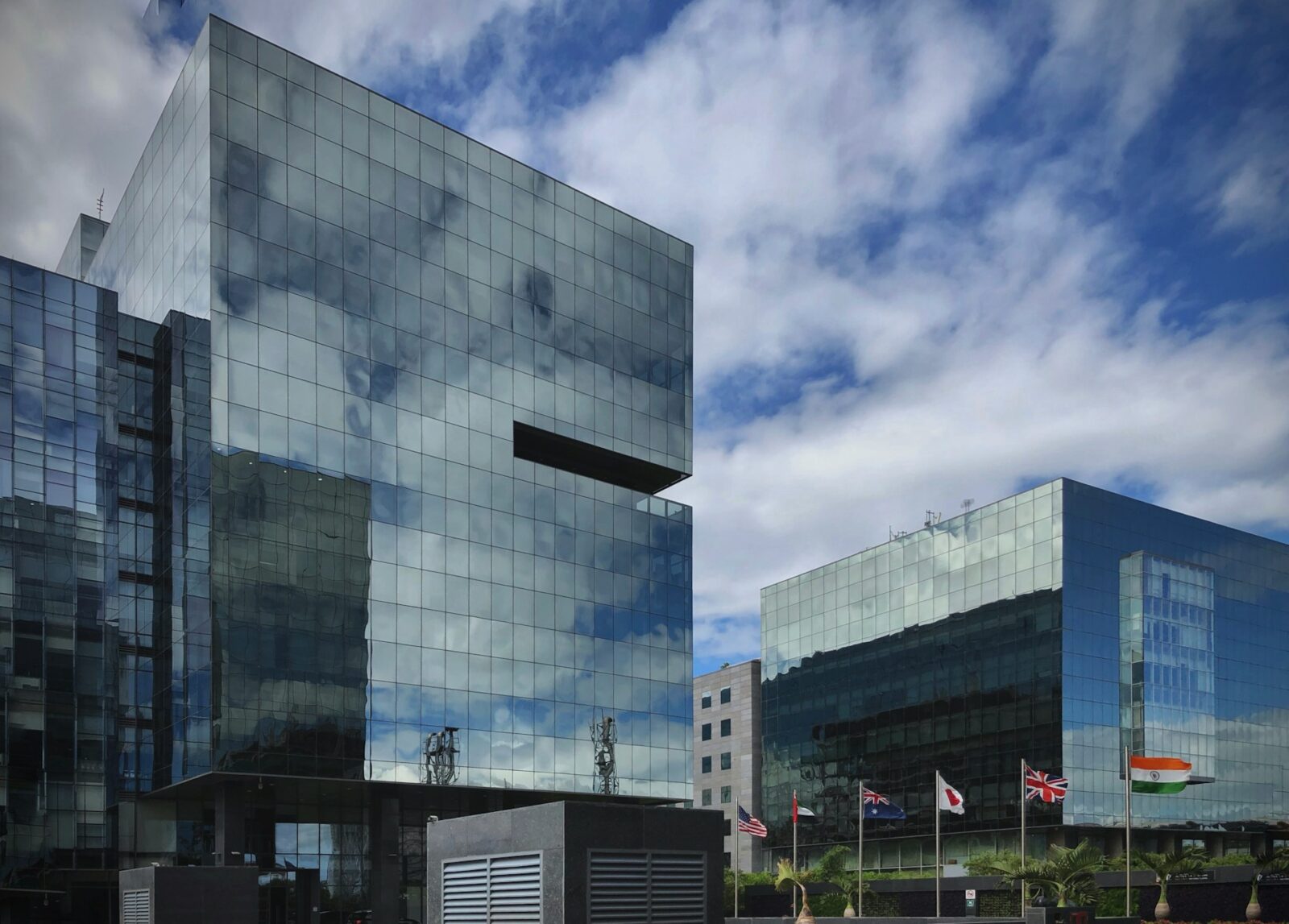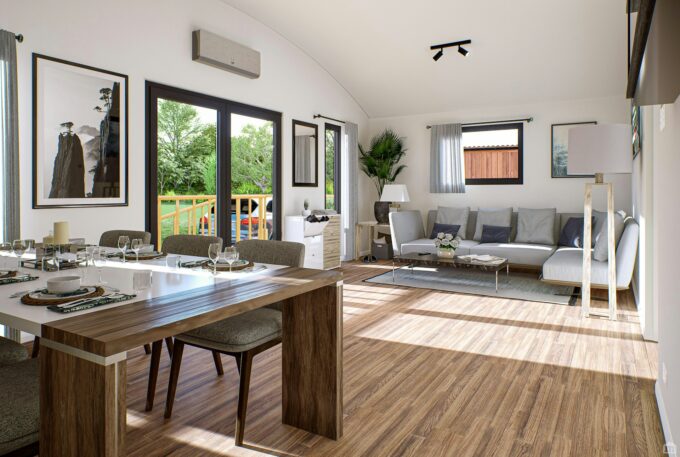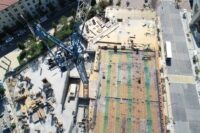Security concerns have reached new heights across commercial, residential, and institutional sectors. From corporate headquarters to government facilities, the demand for robust window protection has never been greater.
While traditional glass offers transparency and natural light, it provides little defense against deliberate attacks or extreme weather events.
Ballistic glass represents a revolutionary advancement in security technology, offering unprecedented protection without sacrificing visibility. This specialized glazing system combines multiple layers of glass and polymer materials to create barriers capable of withstanding significant impact forces.
Understanding the engineering principles behind these protective systems helps facility managers, architects, and security professionals make informed decisions about implementing comprehensive window protection solutions.
Understanding Ballistic Glass Composition
Multi-Layer Construction Principles
Ballistic glass achieves its protective capabilities through sophisticated layering techniques. The basic structure consists of alternating layers of glass and polymer interlayers, typically polycarbonate or polyvinyl butyral (PVB).
Each glass layer provides structural integrity, while polymer layers absorb and distribute impact energy across the entire surface.
The number of layers varies based on protection level requirements. Lower-level threats may require only three to five layers, while high-security applications can demand fifteen or more alternating layers. This modular approach allows manufacturers to customize protection levels for specific security needs.
Material Selection and Properties
Glass selection plays a crucial role in overall performance. Manufacturers typically use tempered or heat-strengthened glass for its superior strength characteristics. The glass thickness ranges from 3mm to 19mm per layer, depending on the threat level and architectural requirements.
Polymer interlayers serve multiple functions beyond impact absorption. They maintain structural integrity even when glass layers crack, preventing dangerous fragments from becoming projectiles. Advanced polymer formulations also provide UV resistance, preventing degradation from prolonged sun exposure.
Bonding Technologies
The bonding process between layers determines overall system effectiveness. High-temperature lamination under controlled pressure creates molecular-level adhesion between glass and polymer layers. This process eliminates air bubbles and ensures uniform stress distribution across the entire surface.
Modern manufacturing techniques include autoclave processing, where assembled units undergo high-pressure steam treatment. This process creates stronger bonds and eliminates potential weak points that could compromise protective capabilities.
Protection Levels and Testing Standards
Ballistic Resistance Classifications
Industry standards define specific protection levels based on threat types and ammunition calibers. The National Institute of Justice (NIJ) provides standardized testing protocols that classify ballistic glass into distinct categories.
Level I protection stops small caliber handgun rounds, while Level IV can withstand high-powered rifle ammunition.
European standards (EN 1063) offer additional classification systems focusing on different threat scenarios. These standards consider factors such as projectile velocity, impact angle, and multi-hit capabilities.
Understanding these classifications helps specifiers select appropriate protection levels for their applications.
Testing Methodologies
Rigorous testing protocols ensure consistent performance across different manufacturers and applications. Standard tests involve firing specified ammunition at prescribed velocities and angles. Multiple shots test the material’s ability to withstand repeated impacts without complete failure.
Environmental testing examines performance under various conditions including temperature extremes, humidity, and UV exposure. These tests simulate real-world conditions that could affect long-term performance and reliability.
Certification Processes
Independent testing laboratories verify manufacturer claims through standardized protocols. Certification involves extensive documentation of materials, manufacturing processes, and quality control procedures.
This third-party validation provides confidence in product performance and helps meet insurance and regulatory requirements.
Manufacturing Processes and Quality Control
Precision Assembly Techniques
Manufacturing ballistic glass requires precise control of materials and processes. Clean room environments prevent contamination that could create weak points in the final product. Automated cutting systems ensure consistent dimensions and edge quality across all components.
Temperature and pressure controls during lamination directly impact bond strength and optical clarity. Manufacturers employ sophisticated monitoring systems to maintain optimal conditions throughout the production cycle.
Quality Assurance Protocols
Comprehensive quality control begins with incoming material inspection. Each glass sheet undergoes stress testing to verify strength characteristics. Polymer materials receive chemical analysis to confirm composition and physical properties.
In-process monitoring tracks critical parameters such as temperature, pressure, and cure time. Final inspection includes optical clarity testing, dimensional verification, and sample ballistic testing from each production run.
Advanced Manufacturing Technologies
Computer-controlled systems enable precise layer placement and consistent pressure application. Robotic handling systems minimize human contact, reducing contamination risks and improving consistency.
Advanced lamination equipment incorporates real-time monitoring of bond quality. These systems can detect potential issues before they affect final product performance, improving overall reliability and reducing waste.
Installation and Integration Considerations
Structural Requirements
Ballistic glass systems require substantial structural support due to their increased weight and thickness. Standard window frames cannot accommodate the additional loads and dimensions of protective glazing systems.
Structural analysis determines appropriate support requirements for specific applications. Factors include building type, window size, and expected threat levels. Professional engineering analysis ensures adequate support without compromising building integrity.
Framing Systems
Specialized framing systems distribute loads evenly across supporting structures. These frames often incorporate blast-resistant features to provide comprehensive protection. Materials selection focuses on strength, durability, and compatibility with existing building systems.
Security considerations extend beyond the glass itself to include frame attachment methods and potential bypass routes. Proper installation eliminates gaps that could compromise overall system effectiveness.
Integration with Existing Security Systems
Window protection systems work most effectively when integrated with comprehensive security measures. Electronic sensors can detect impact attempts and trigger appropriate responses. Communication systems ensure rapid notification of security personnel.
Access control systems may incorporate window monitoring to provide complete perimeter security. Integration with surveillance systems provides visual confirmation of potential threats and system status.
Maintenance and Longevity Factors
Cleaning and Care Requirements
Ballistic glass requires specific cleaning procedures to maintain optical clarity and prevent damage. Standard glass cleaners may contain chemicals that can degrade polymer layers over time. Manufacturers provide detailed cleaning protocols using approved materials and techniques.
Regular inspection schedules identify potential issues before they affect performance. Trained personnel can recognize signs of delamination, stress cracking, or other conditions that might compromise protection capabilities.
Environmental Considerations
Long-term exposure to environmental factors can affect performance characteristics. UV radiation, temperature cycling, and humidity variations place stress on laminated systems. Protective coatings and proper installation techniques minimize these effects.
Regular maintenance schedules address environmental impacts through preventive measures. Seal replacement, frame maintenance, and protective coating renewal extend system life and maintain protection levels.
Replacement and Upgrade Considerations
Ballistic glass systems typically provide decades of reliable service with proper maintenance. However, changing threat levels or building modifications may require system upgrades. Modular design approaches facilitate future modifications without complete system replacement.
Planning for future needs during initial installation can reduce upgrade costs and complexity. Standardized mounting systems and oversized structural supports accommodate future enhancements.
Cost-Benefit Analysis and ROI
Initial Investment Considerations
Ballistic glass systems represent significant capital investments compared to standard glazing. However, comprehensive cost analysis must consider long-term benefits including insurance reductions, liability protection, and asset preservation.
Installation costs vary based on building type, window size, and protection level requirements. Professional installation ensures proper performance and may be required for warranty coverage.
Long-Term Value Proposition
Security technology investments provide value through risk reduction and business continuity protection. Quantifying these benefits helps justify initial costs and demonstrate a return on investment.
Insurance companies often provide premium reductions for properties with certified security systems. These ongoing savings can offset initial investment costs over the system’s operational life.
Comparative Analysis
When evaluating protective options, ballistic glass offers advantages over alternative security measures. Unlike bars or shutters, protective glazing maintains normal building appearance and functionality while providing continuous protection.
Comprehensive security solutions may incorporate multiple technologies for optimal protection. Ballistic glass serves as a foundational element that enhances the effectiveness of other security measures.
Advanced Security Solutions for Modern Challenges
The evolution of ballistic glass technology continues to address emerging security challenges across various industries. From financial institutions to educational facilities, these advanced systems provide peace of mind through proven protection capabilities.
Professional consultation helps identify appropriate protection levels and system specifications for specific applications. Security assessments consider threat probability, building characteristics, and operational requirements to develop comprehensive solutions.
If you’re ready to learn more about implementing ballistic glass systems for your facility, contact security professionals who can evaluate your specific needs and recommend appropriate solutions. Investment in advanced window protection technology provides long-term security benefits that extend far beyond the initial installation.













